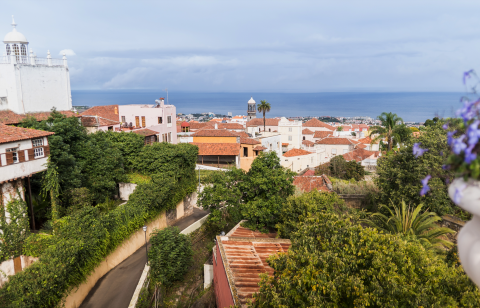
You’re on La Orotava Bridge. If you look down, you’ll see that the two banks of the Araujo ravine join here. This bridge crosses the divide that used to make transiting the town difficult. It was built in the 1960s. Looking out to the sea from the bridge, there’s a stunning view of the roofs of La Orotava's old houses and several of the main churches. You can see the dome of Santo Domingo Church straight ahead. Above it and further to the left are the bell towers of the enormous Concepción Church. At the top of some stately homes you can also see the traditional viewpoints and high balconies with railings, some of which have elegant glass skylights. These were used to keep an eye on the properties on the estate, the farmers working in the fields and even the coastline. The sea was essential to survival, since it was the only point of connection with the outside world, and the threat of piracy was a constant risk until well into the 17th century. If you look towards the coast you will see the Puerto de la Cruz, La Orotava's old port, which gained independence in 1808. Puerto de la Cruz was a port of great importance. It gained its independence from La Orotava at the start of the 19th century, after a time of tension during which the cannons of San Felipe Castle on the coast were pointed towards La Villa. If you look down, you’ll see the back balconies and service doors of the stately homes that have main entrances on Calle Tomás Zerolo. The Araujo ravine was the physical boundary of La Orotava's first settlement which, in the 16th century, extended from this point to the Concepción Church. Now go back to the tourist office and walk under the porticoes towards the cobbled street further down. Cross the street to find the sign for the next track.





